
It was time for yet another random outing. The weather was fine. Not too hot (we’re from Seattle, remember), and we had not been out to sightsee for a couple of weeks. Determined not to neglect any of our fortunate time here in France, we decided that we needed to get out and see something new. So, late Saturday night I leafed through one of our guidebooks and found a few interesting spots located to the east of us. Not far. Perfect for a short day-trip. Having settled on two sites, we set off on Sunday morning. And, yes, technically, it was still morning (11:30). Just. Unless we’re compelled by some unreasonably early appointment, 11:30 is about as soon as Cherie and I are likely to step out of the door. It’s a well-established family policy.
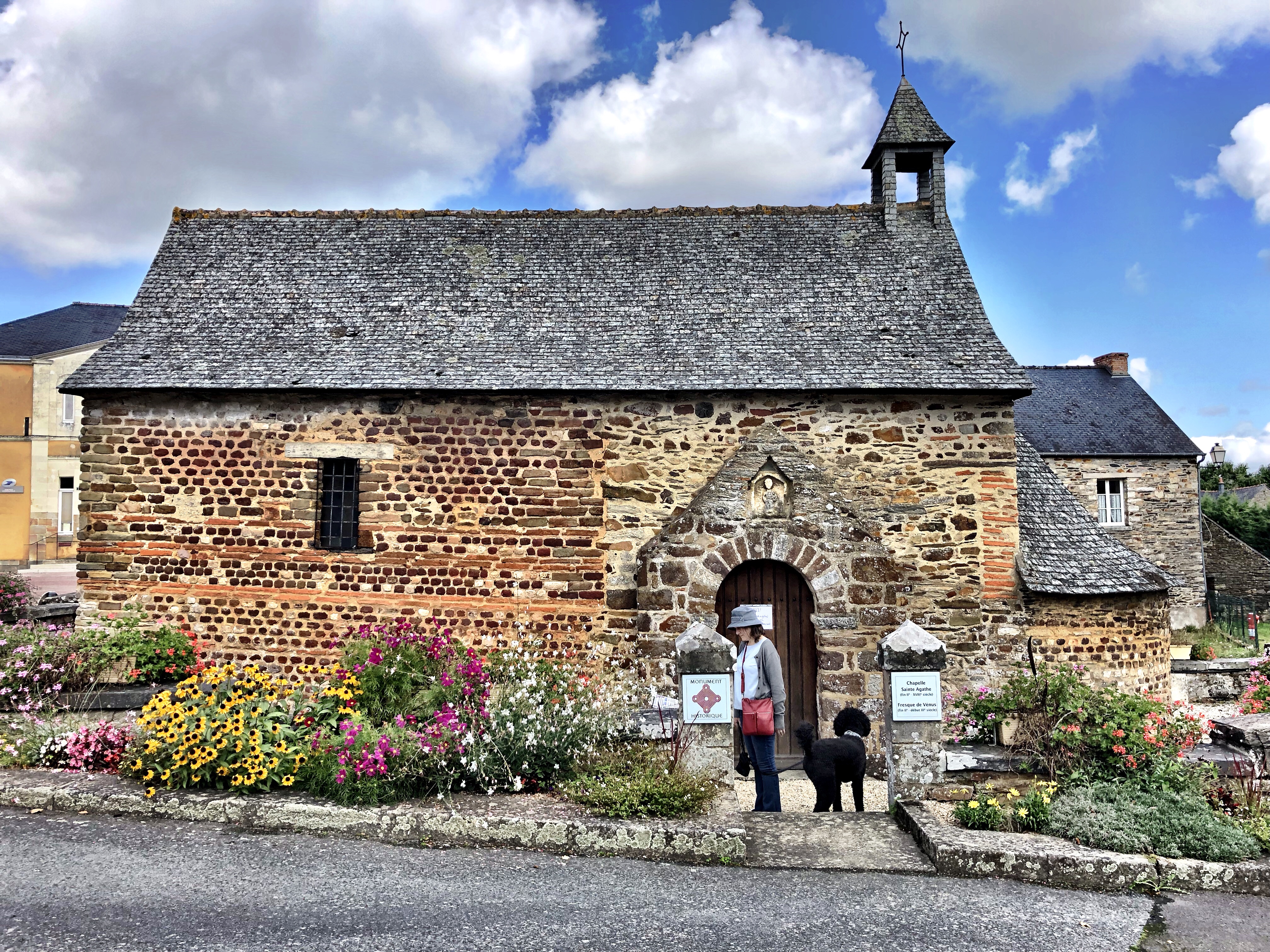
First on the agenda was the small town of Langon. This community sits on one side of a valley through which runs the Villaine river. The town is also fortunate to have a rail station on the line which runs from Redon to Rennes, giving it connections to Nantes in the south and Lorient to the west. After a nice 45-minute drive through undulating countryside and pleasant little villes, we arrived, winding gently down through pretty stone buildings into the center of town. The sun was shining through a tattered carpet of pillowy clouds, the temperature was just perfect for a t-shirt, jeans and cardigan – and it was quiet. Like, really quiet.
Sundays are quite lazy days in France unless you find yourself in a larger city. Very few (if any) shops are open and, if they are, only for a couple of hours in the morning. Usually one can find a café, bar or restaurant open during the lunch hours (12pm – 2pm). And boulangeries are generally open throughout the main hours of the day. Given our accustomed late starts, we nearly always end up at a boulangerie, grasping for the last sandwiches or quiches remaining in their glass cases. But, this being France, they almost without exception prove to be excellent fare. Even if the sandwiches or quiches aren’t so great, we never leave a boulangerie without patisserie (also family policy – the first item on the list, as a matter of fact); so, a mediocre meal will always be made infinitely better by finishing off with a lovely fruit tart or at least a pain au chocolat! It’s pretty hard to lose under such circumstances.
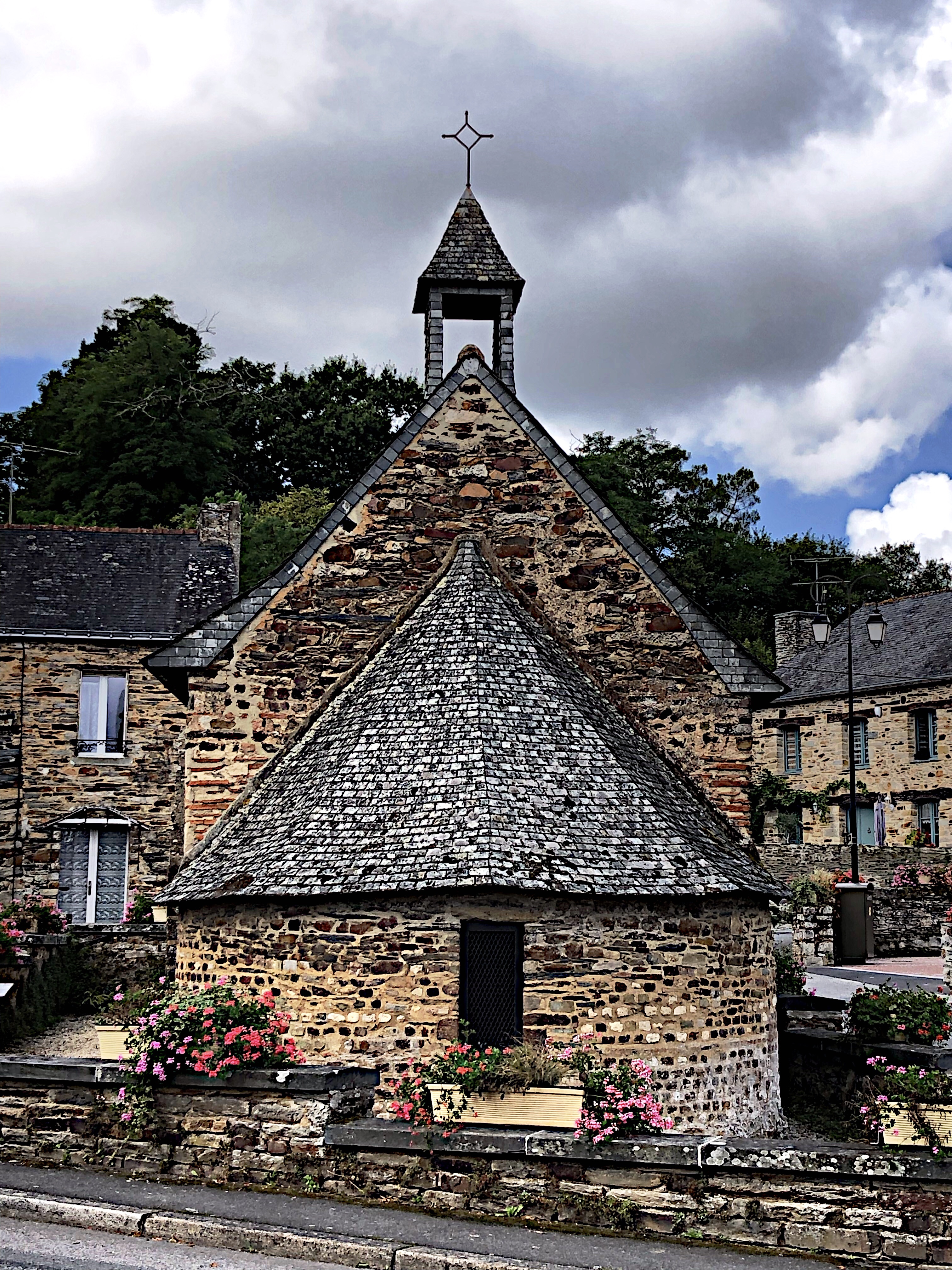
Apart from a couple of other visitors and some locals in the lone café to be open that day, we had the town to ourselves. Our aim was to see the Chapelle Sainte-Agathe. This chapel is one of the few surviving examples of Gallo-Roman architecture in Bretagne. It it thought to have begun life in the 4th century as either a mortuary vault or as a bath. At some point it became a temple for venerating Venus and then transitioned into a Christian church. The history seems rather unsettled, but regardless of that, this little building is a rare survivor in this part of France. Over 1,600 years old. Amazing!
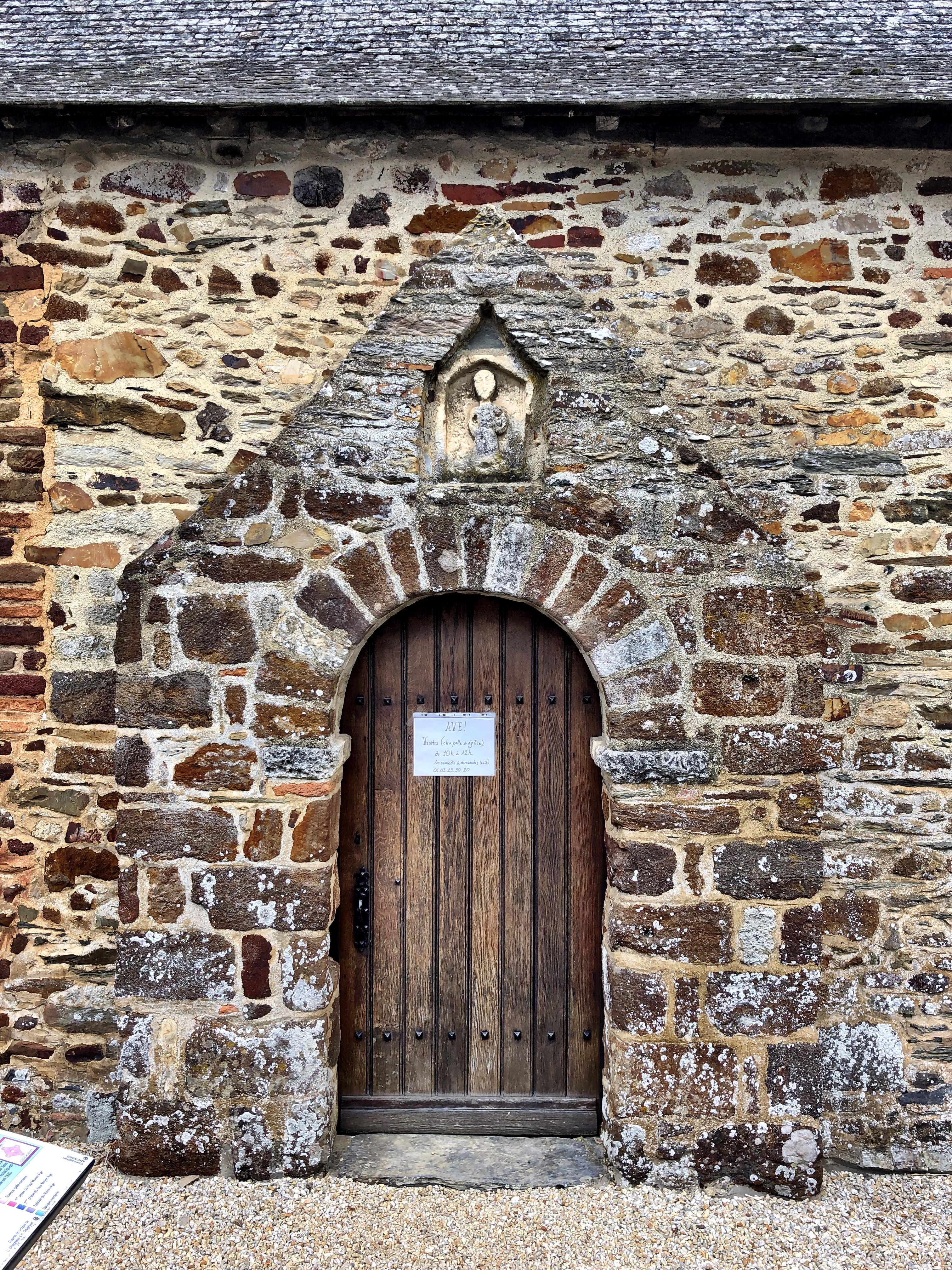
But, O Fortuna! The chapel was closed. Not entirely surprising. But disappointing nonetheless. The interior is supposed to contain a fresco of Venus rising from the waves and Eros astride a dolphin. Racy. It would have been great to see the inside, but that’s the chance you take when you make spontaneous sight-seeing trips on a Sunday. It’s not far from Malestroit so we will have to make a return trip to view the interior of this lovely little chapel.
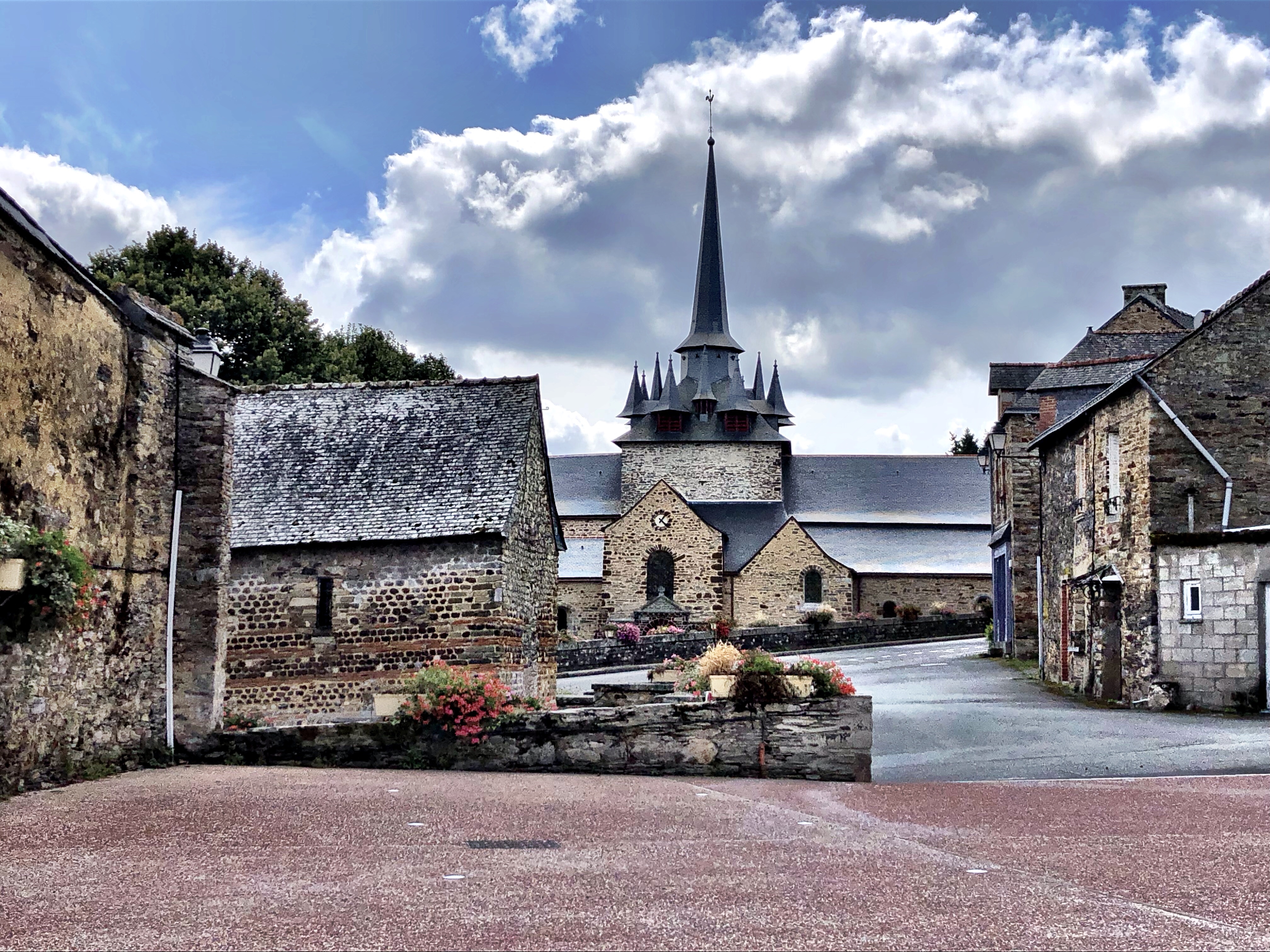
An unexpected bonus of our visit to Langon was the town’s parish church: Église St. Pierre. The church is literally steps away from the chapel and we were delighted to see a marvelous display of twelve bell-turrets arranged around the tower, each one keenly pointed and individually shod in slate tiles. It was plain to see that this church has been entirely restored – inside and out – within the past couple of years. And a fine job was done. Very impressive work. We were especially taken with the interior. The lime-render of every wall surface had been completely renewed and sensitively redecorated in a period fashion which evokes its original state when first constructed between the 11th and 12th centuries. It is magnificent. Just the kind of restoration we like to see.
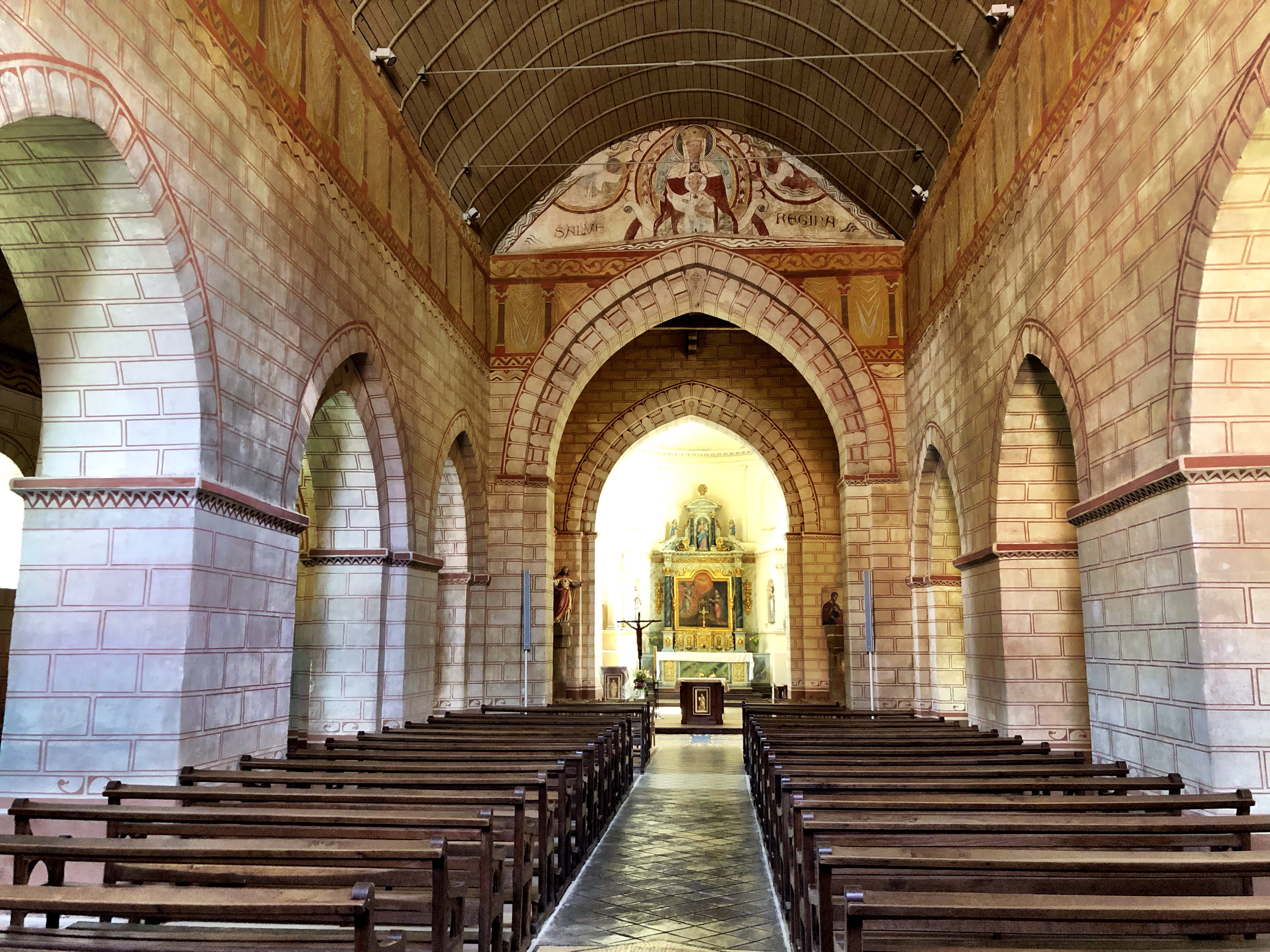
We had the entire church to ourselves, allowing us to appreciate undisturbed the harmony of the architecture and its decoration. The peace of our visit was only broken once, momentarily, when one of the church bells suddenly (and loudly) struck the hour somewhere directly above. At the time, I was having one of those sublime out-of-body moments that I experience whenever I am confronted by a beautiful medieval building. The bell shocked me so much I nearly let fly with a pithy selection of invective from my vast vocabulary of swear words and curses. Luckily, I managed to swallow my frothy utterance before committing an outrageous (though witty) sacrilege. I’m not in the least bit religious, but I have a great respect and admiration for these buildings, as well as for the people who maintain them and the congregations who keep them alive. The last thing I want to do is dishonor a place so precious to them. This time I had had a narrow escape!
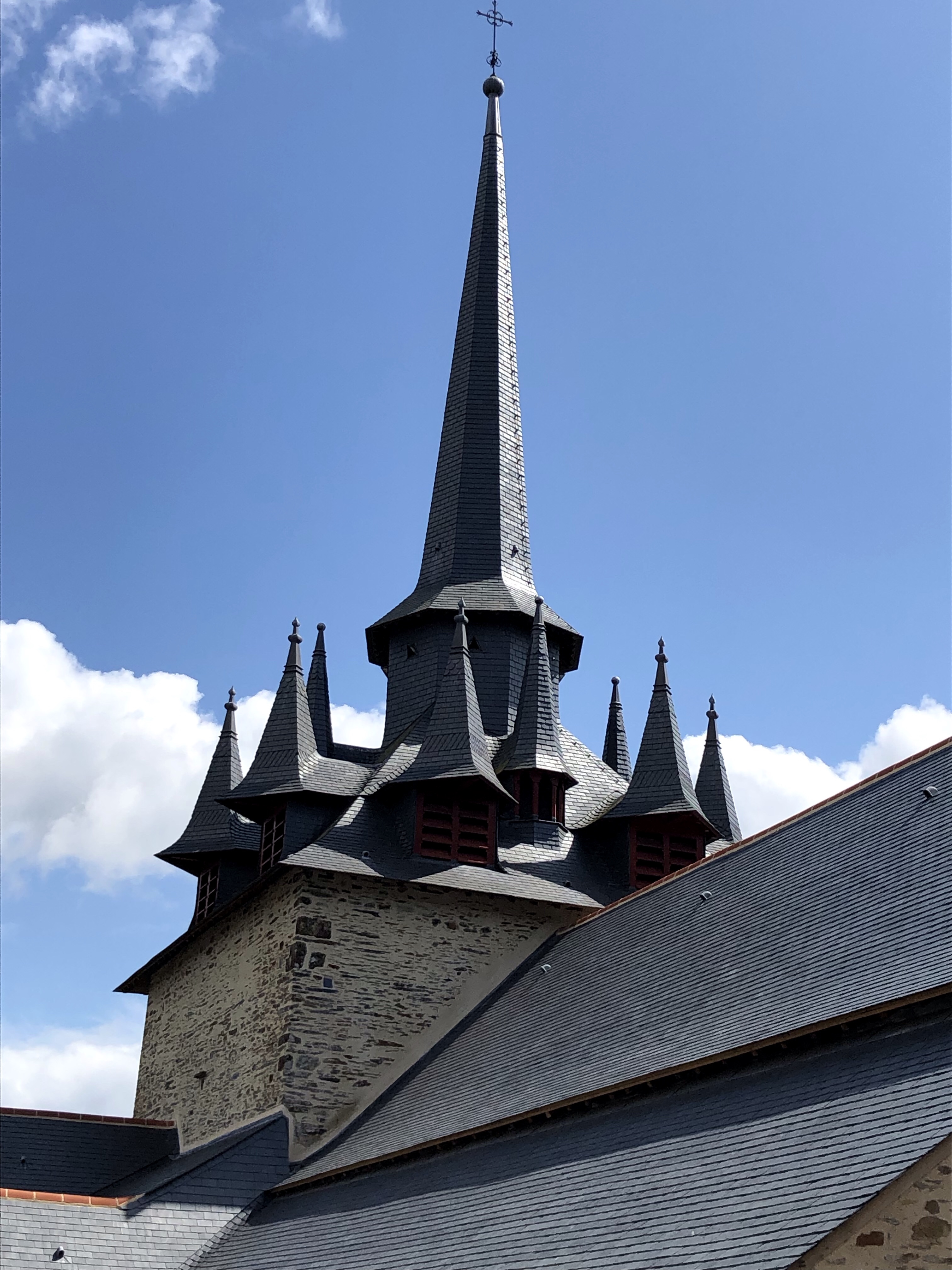
Admiring chapels and churches is hungry work. It was also mid-afternoon. Cherie spotted a boulangerie just up the street from the church so she just managed to squeak through their open door before they closed while I minded Saxon. Distraught, as he always is, to be separated by more than three feet from the love of his life, Cherie, the dog and I fidgeted outside while she grabbed lunch. Out of sandwiches, the boulangère sold her a couple of individual quiches, a strawberry tart (for Cherie) and a pear tart (my favorite). We quickly munched them in the car in a very un-french manner, and then set off for our second destination: Grand-Fougeray.
Crossing the Villaine river and continuing further eastward for 15 minutes brought us to Grand-Fougeray. It’s a small-ish town of around 2,500 souls with a lovely square. Even though the end of lunchtime was fast approaching the restaurants terraces were still lively with diners enjoying their meals en plein air on this relaxed summer’s day. It made for a nice atmosphere amidst the backdrop of well-maintained 18th and 19th century facades and riots of flowers blooming in the numerous planters dotted around the square. So typically French. These scenes, so common in France, make us smile every time.
But our goal in this area lay instead on the edge of town. So, this time, at least, we didn’t tarry in the centre-ville and made straight for La Tour du Guesclin. This tower, or donjon, is the only substantial remnant of a castle that had once guarded not only the town of Grand-Fougeray, but also the border of Bretagne which, for most of the Middle Ages, was an autonomous duchy, independent of the kingdom of France. Such vigilance was necessary. For several french kings had made military forays against Bretagne. The only land approach being from the east, several large fortresses were constructed on Bretagne’s borders to guard against recurring french invasions. The castle at Grand-Fougeray was one of these (our new home to the north, Fougères, was another of these guardians of the marches). This string of defenses served as a bulwark to help maintain the duchy’s independence for centuries.

Our guide-book merely includes a brief mention of the Tour du Guesclin. No photos. From the description, we expected a stumpy ruin poking out of the grass, just recognizable as having once been a tower. But as we drove into the casually-marked parking lot, we were stunned to be confronted by an intact monumental stone tower 34 meters high and 13 meters wide. Wow! Although once part of a walled castle, the tower now stands alone, the last sentinel still keeping watch over this part of Bretagne’s ancient border. A beautiful and serene park and arboretum has grown up around the tower, resulting in a very pleasant setting. The tower’s neighbor next door is an eighteenth-century château-cum-convent and on this day several of the nuns had ventured out between their daily services to enjoy the park and take a jovial turn up the spiral staircase of the edifice which overlooks their garden walls.
The fortress of Grand-Fougeray was begun in 1189. In 1350 it was captured by an english pirate (seriously) and occupied by the english for four years until Betrand du Guesclin, constable of France, recaptured it. The tower has borne his name ever since. When we first arrived, the tower appeared to be closed. It looked like, if were to get a look inside, we would ourselves have to lay siege to it. But we forgot to bring our battering ram. So, after a first look around the exterior, we took a stroll through the arboretum, Saxon having great fun sniffing around and watching the many ducks in the ponds with his ever-present fascination for such things. When we returned, the door of the tower was wide open and people were casually entering. Not a battering ram in sight. What luck! It must have been closed for lunchtime. Opening (and closing) times in France are highly unpredictable, changeable and often seemingly random. Sometimes you get lucky. We were quite happy to find that this was one of those times.



Sensibly, the French tend to take a dim view of allowing a large black standard poodle who is lavishly uninhibited in demonstrating his love of meeting new people to wander around inside national historic monuments. So, I entered the tower first to have a look around while Cherie waited outside with our celebrity dog. Ostensibly, the tower was open for an art exhibition. A number of local artists had their works plastered all over the interior spaces of the tower. Although the “art” was a bit distracting, it was still possible to see the beautiful architecture it was concealing.

Clearly, this was once a lavish building. Still visible are the numerous carved moldings, capitals, plinths, lintels, architraves and other decorative features. It was easy to imagine the now-bare stone walls once covered with lime plaster and brightly painted with patterns, figures and/or solid panels of color, some hung with tapestries or painted cloths. Even though it is now a bit stark, it is easy to feel how comfortable and luxurious the rooms of this tower must have once been. Each floor, joined by a projecting spiral stairway, features a large central space from which smaller peripheral chambers radiate around the exterior. The floors were laid in red or buff-colored terra-cotta tiles adding a further sense of solidity to the spaces (as if it needed it). I lingered as long as I dared. After a last look, I reluctantly exited so that Cherie could take her turn. She found it no less impressive than I did. All in all, we both felt that this was a real gem and one of the better medieval buildings we have visited.

Our visits to Lougan and Grand-Fougeray were further proof of our theory that, more often than not, it is the unexpected things which turn out to be the most rewarding travel experiences. It is the surprise discovery or the unforeseen event which gives us the most pleasure, the most long-lasting memories.
Serendipity. We swear by it. And it almost never lets us down. We hope that it works in your favor as well.
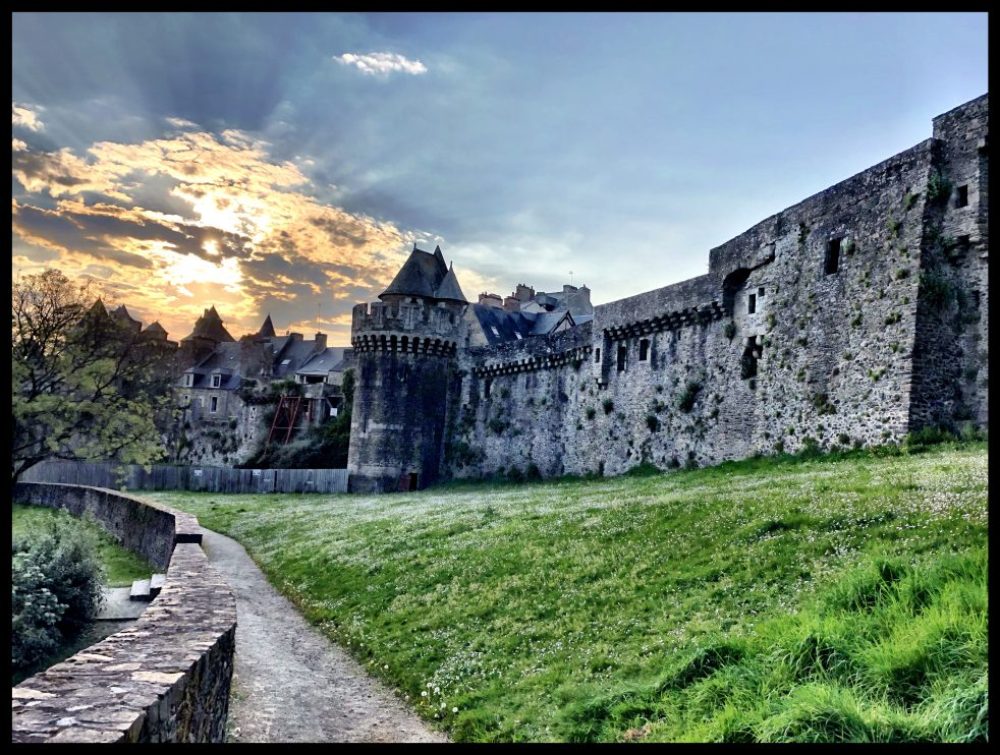
You’re very fortunate to have undertaken this new life while you’re still young enough to enjoy the beauty.
LikeLike
Don’t we know it! We’re trying our best to make the most of it for as long as we can.
LikeLike